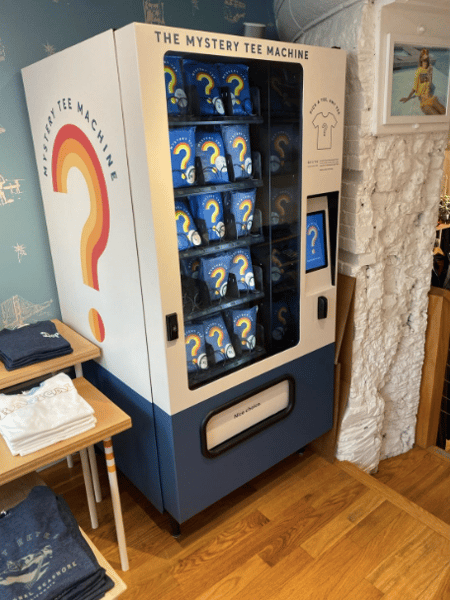
Brick-and-mortar retail was supposed to be dead. But while many legacy retailers have had a rough go of it, modern retailers, including boutiques, aren’t just surviving. They’re finding ways to thrive. Research shows that for every company shuttering its stores, more than five other brands are opening new stores to fill that space.
What gives? Well, there’s no one reason. Today’s shoppers see all kinds of value in brick-and-mortar shopping, which is one reason physical stores have been so stubborn in the face of forecasted death.
Instead of accepting their fate, innovative retailers revamped their in-store experience with a customer-centric approach—and now they’re reaping the benefits. Here are five reasons why shoppers still love shopping at brick-and-mortar stores.
1. Customers are attracted to immersive retail experiences.
An immersive experience doesn’t have to be one that offers virtual reality or augmented reality (although those aren’t bad, if you have the budget). There are a lot of different ways brands can create an experience that draws customers to their stores.
Innovative brands like Story are experimenting with experiences that keep shoppers coming back to their stores. Story operates as a serial pop-up that features inventory and an experiential narrative that is constantly changing—and rewarding shoppers who make repeat visits. The brand’s ethos driving this strategy? That 70 percent of the experience should be what customers are familiar with—and the other 30 percent should be, in the words of Story’s CEO, “surprise and delight.”
Brands should feel encouraged to experiment with other ideas, such as Instagrammable store backdrops, which are particularly popular among millennials and Gen Z. Marine Layer features a mystery T-shirt vending machine in many of its stores, providing an innovative twist on in-store retail that offers a new experience and a social sharing opportunity.

2. Customers appreciate the help of a knowledgeable associate.
Online shoppers have to conduct research on their own. Sometimes shoppers prefer to have an expert guide them through the process.
This is one of the top reasons why shoppers visit brick-and-mortar stores. And it also helps in-store sales: Research shows that 90 percent of consumers are more likely to buy when assisted by a helpful, well-informed associate. If you need to improve in that department, seek out retail training tools that can help equip your associates with the knowledge they need to provide exceptional customer service.
This one-to-one customer service has long been a benefit of shopping in physical stores—and that hasn’t changed.
3. Customers can receive their items faster.
Many retailers have upped their convenience game, offering two-day shipping, one-day shipping, and even same-day shipping. However, none of these options are as fast as stopping by the store and picking up the item on your own.
When shoppers want products right away, physical stores offer the best option. And with integrated inventories and real-time information made available online, shoppers can visit a store knowing that their item is in stock—a huge upgrade over the days when shoppers were sent running around town looking for a store that carried that item. Options like buy online, pick up in store only facilitate this fast service, while ensuring customers don’t visit a store only to find that their desired items are out of stock.
4. Customers want to be able to try before they buy.
The ability to try on products, or simply hold them in their hands and test them out in a store, is the leading reason to shop at brick-and-mortar stores for many customers.
This is also the guiding strategy for DTC brands like Bonobos, which turn retail stores into showrooms where products can be viewed, touched, and even tried on—but any purchases made are shipped to the customer’s home from a fulfillment center. MeUndies offers a similar approach at its single physical store, centering its customer experience on the ability to feel the softness of its products firsthand.
5. Shopping isn’t only a task—it’s also a form of entertainment.
Immersive experiences are only one kind of attraction that can bring shoppers into your store. Consider guest appearances, classes and workshops, and other unique in-store events to turn your store into an entertainment destination.
Kitchen equipment stores, for example, often host cooking classes or demos for customers. Retailers can also offer wine night events paired with one-night-only discounts, using the promotion to increase store dwell time while giving shoppers a fun excuse to hit the town.
Sometimes this is expanded to include entire business/shopping districts: In Santa Barbara, California, the downtown association sponsors First Thursdays, which doubles as a local arts event and a community engagement event for retailers.
Shoppers are eager to shop in brick-and-mortar stores. The key is offering experiences that align with their interests. They want tech-enabled, value-added experiences—and that includes entertainment value. On top of that, customers appreciate a commitment to traditional customer service, paired with solutions that make this service faster and more efficient. Meeting these expectations is a small price to pay for a dedicated base of regular visitors to your store.


